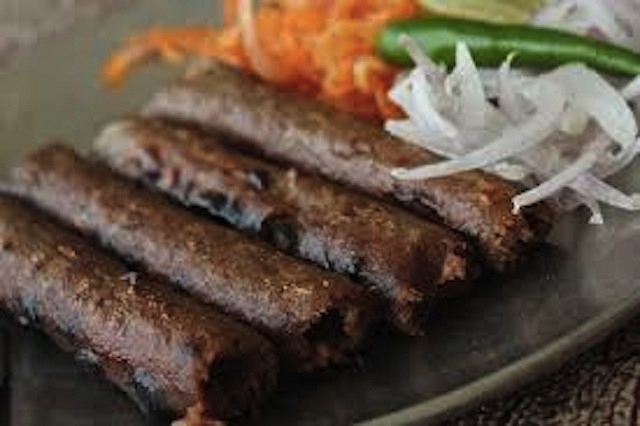
Sehri: The Meal Of Blessings
Less spoken about today, Sehri or the meal of the Suhoor was once the most interesting meal of Ramzan
The Imperial kitchen was at full throttle, but this wasn’t an ordinary day at work for them. Perched on top of a makeshift platform was the otherwise calm Mir Bakawal looking keenly at every preparation one last time. Soon the fare would be sealed and sent to the palace of Princess Jahanara carried by a train of pot bearers. The Padisha Begum (Lady Emperor), a title bestowed on her by Shah Jahan, had insisted on tasting the fare before the emperor could partake of the Sehri.
The emperor, who had taken to vegetarian food intermittently after the passing of his beloved Mumtaz Mahal, had asked for the Lazizaan , a favourite of Akbar for the pre-dawn meal. It was his go-to meal on days he wanted to feel close to Allah. Famous for introducing colour and aroma in to the Imperial cuisine, Shah Jahan often began his fast with seven different coloured fruits and an array of dishes like the Hays and Madira, and folklore has it, would have a more elaborate Sehri menu than Iftaari.
The meal that day was no different. On the menu besides the delicious Lazizaan was Ka’k, puri-kebab and a pancake called Loute Poute along with various kebabs and the Emperor’s favourite ‘paan’, which was served minutes before the aazaan that announced the start of fasting.
In fact, paan was one of the delicacies of both Sehri and Iftaari during Shah Jahan’s time who insisted on being presented with not one but half a dozen variations of paan for Sehri, month long. Yet another imperial favourite was the Kashmiri ‘bebr-i-buel’. Essentially, a milky beverage prepared from locally grown basil seeds that was soaked hours, milk and kateer (Gum Arabic, and later sugar), it was known to keep one rehydrated for long hours. You can still find this treat served during iftaari in the streets of Kashmir.
Such was the emperor’s belief in the virtues of Sehri that for his famous wall city, Shahjahanabad, he would order special dishes to be brought in from Agra, Muradabad and even Meerut. Some of those delicacies can still be found in the by-lanes of Mathia Mahal bazaar in old Delhi, especially the once favourite, ‘Safed Gajar ka Halwa’, for which pale yellow carrots were brought from Maharashtra.
The pre-dawn meal ritual remained unchanged even during Aurangzeb’s reign. Shah Jahan, now a prisoner, was still given the same privilege during Ramzan. Though with Aurangzeb, a vegetarian, Sehri had newer additions of vegetarian fares and five varieties of dates that were specially brought in from the Middle East and Persia. It also had an addition of halwa, especially that of aloo and doodhi halwa. Khichdi was still very much a Sehri staple for Aurangzeb, who preferred that to the more elaborate pilafs and madira, which was a meat dish cooked in sour milk and spices.
Exotic as it became over the years, thanks to the khansamas who worked harder to find dishes that could sustain the royals to fast well, Sehri’s beginning inside the abode of Prophet Muhammad as a means to sustain the body and soul through the hard time of Ramzan fasting was as two simple things: dates and spring water. Legend has it that even the Prophet preferred to have this meal along with his companions before starting on with the rigours of fasting.
The belief is that those who partook of the Sehri, and also shared with others, found the blessing of Allah and the courage to righteously go through the day without being lured by the worldly sins. The Prophet himself had said, “Eat Sehri, because in it lie great blessings; and again.”
Unlike today, when Sehri has become a quick fix sandwich or a store bought fare, thanks to paucity of time –Olympia, one of the iconic eateries in Mumbai, serves a sumptuous egg paratha and keema for the same – back in time cooking a good feast was the common norm. Usually, it would be the wives who would prepare an array of dishes including yakhni, puri-kebab, thari kanji, korma and the must-have Khajla-pheni, a Baqar Khani family recipe, this sweet dish is considered the healthiest dish for breakfast and can keep one nourished and hydrated for long hours.
In Lucknow, by the end of medieval period, peas had become an interesting addition to the Sehri. A favourite among the royals and commoners alike, it began appearing time and again as tehri (a modern-day pea pilaf) in Sehri at homes along with the other favourite lachcha (seviyyan) kheer. Even today the lachcha kheer along with the ghee paratha stuffed with moong dal is a common Sehri staple along with meethi chai.
Just like the keema-anda, which is cooked in ghee and a good helping of hara lasan (green garlic) and hari mirch! A Bohri specialty, this keema is known to keep the stomach in good shape for the evening celebration, and is still one of the chosen Sehri dishes by most families given its protein-rich nature.
Clearly, Sehri wasn’t only about the blessing but also a look into healthy food theories of the time. The fact that it also introduced some of the most ‘nourishing’ dishes like the Hays, Khajla and Khajuri Khasta is a ‘blessing in disguise’.